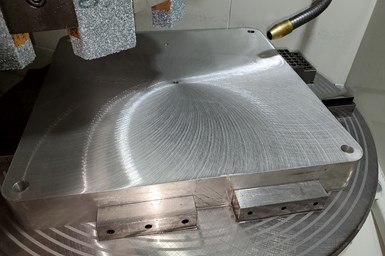Metal additive manufacturing removes many bottlenecks from the manufacturing process, but it also introduces a notable new one: users must remove all residual metal from build plates before reusing them. The latest rotary grinders can provide an efficient alternative to wire EDM or bandsaws for removing this material while also ensuring flatness and levelness. These machines put the tight tolerances, quality surface finish and automation-driven efficiency that build plate grinding demands well within reach.
Automate Inconsistencies Away
“Unlike older-style machines, advanced rotary grinders do not need constant operator input or oversight,” says Doug Hedges, chief technology officer of AM contract manufacturer Beehive3D, Inc. “This allows the operator to multitask and minimizes the risk of error.”
For example, high-end rotary surface grinders can control the initial contact between the abrasive wheel and the build plate instead of leaving it to the operator. They use vibration feedback from sensors to automatically fine-tune not only the pressure of the spindle motor, but also how quickly it moves the wheel down onto the build plate. The grind cycle begins when the machine senses that the abrasive wheel has contacted the build plate.
“Different grind recipes can be set for different customers, material types or construction builds so complex programming or data does not need to be entered at the start of each job,” explains Erik Lawson, engineering manager at DCM Tech.
Also important is the ability to alter grinding parameters through the grind cycle. The material characteristics of the printed part residue and the build plate may be very different, and the grinding abrasive must work differently on both surfaces. Modern rotary grinders automatically make that transition. Newer equipment also tends to include built-in load monitoring, reducing the necessary amount of operator oversight.
Read more: Rotary Grinders Leave Cleaner Build Plates





